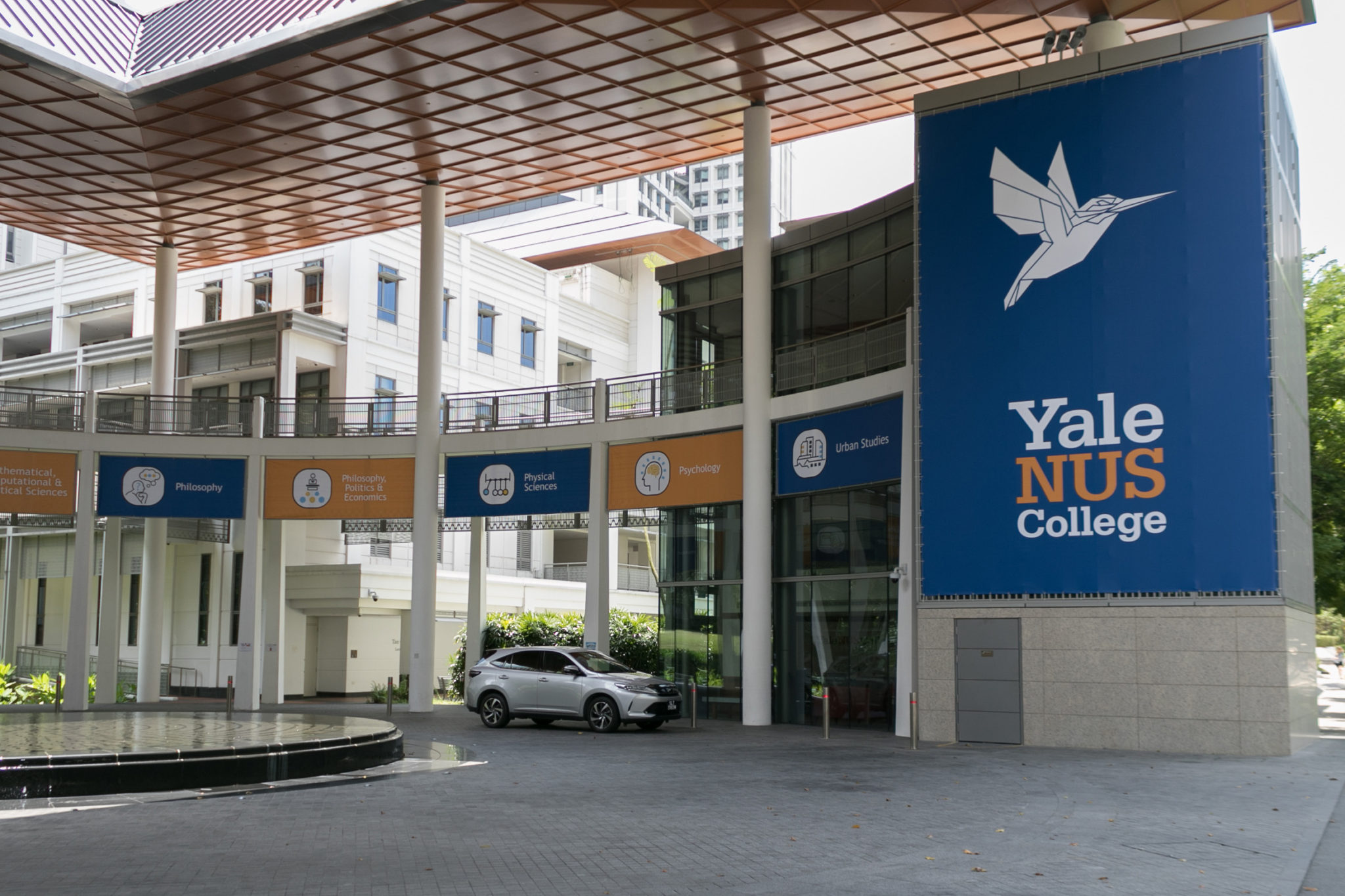
Asha Prihar
SINGAPORE — The first cohort of Yale students to study abroad at Yale-NUS College in Singapore are over halfway through their visiting term at the Southeast-Asian school. And while their time at the sister college has differed from their experiences at Yale in many respects — including social life and Yale-NUS’ multimillion resident urban setting — it has mirrored Yale in many others — including class discussion and institutional structure.
Though Yale has welcomed a cohort of 24 Yale-NUS students every year since the 2015–16 academic year through the Visiting International Students Program, Yale-NUS President Tan Tai Yong told the News in November that no Yale student had ever spent a semester abroad at Yale-NUS. But last fall, Yale Study Abroad Director Kelly McLaughlin said that eight Yale students were considering the opportunity, adding that the option had been offered by the Center for International and Professional Experience for three years, but no students chose to pursue it. Of the students considering the opportunity, three — Kento Tanaka ’20, Dustin Nguyen ’20 and Meng Fei Shen ’20 — ultimately decided to pursue a term abroad in Singapore this spring.
“From what I hear, they are having a good experience,” Tan told the News on March 14. “I’m hoping that the three students will be our ambassadors going back to New Haven to say that, hey, this is a nice place to visit, do come. There’s no shortage of our students wanting to go over to New Haven because it’s a known quantity over there, but I guess with Yale students, less is known about Singapore, so the more we spread the good news, the better.”
In interviews with the News, Tanaka and Shen said that the type of classroom discussions and format of their seminars at Yale-NUS have been similar to those they have taken at Yale. But the two students noted that the content and selection of classes differ from offerings at the University. Shen, who is majoring in East Asian studies, said that she appreciates how the course offerings cover a more balanced mix of Eastern and Western material. Tanaka noted that he is taking fewer lectures than he would at Yale, as the curriculum at Yale-NUS is heavily seminar-based.
Still, Nguyen said that when he was planning his abroad experience, he wished that he would have “been more cautious in selecting” his courses, which he expected to be taught similarly to courses at Yale. Instead, Nguyen — an economics major — said he was surprised to find that his economics professors shared relatively less of their own professional experiences and perspectives, which he said he felt were present in Yale courses with professors like William Nordhaus ’63 and Stephen Roach.
The students highlighted that the small size of the college — which currently enrolls around 900 students — contributes to several differences between Yale-NUS and Yale, which enrolls 5,453 undergraduates.
While Tanaka said that the people he meets at Yale can often “disappear into the wind” after the first encounter, he is likely to repeatedly run into the same people at Yale-NUS.
Nguyen said that the college’s small size makes campus events like Rector’s Teas — events modeled off of Yale’s College Teas — more intimate and allows for more personal interactions with speakers and a better opportunity to ask them questions.
The students noted that they have not gotten involved in extracurriculars for the most part, since extracurricular groups there do not usually recruit during the spring semester. However, they added that mahjong — a Chinese tile game — is a popular social activity and that they have played the game with other students in Yale-NUS’ butteries. Tanaka said he “wishes [he] could bring it back to Yale.”
Still, Shen — a member of C-Sharp Chinese A Cappella at Yale — said that she posted on Facebook to gauge interest in potentially beginning a similar group at Yale-NUS and got an enthusiastic response. The new group has had several rehearsals, and Shen said she hopes to one day see collaboration between the currently nameless Chinese a cappella group at Yale-NUS and C-Sharp at Yale.
Yale-NUS’ location in Singapore has also made a difference for the students. While New Haven has a population of 131,014, Singapore is a city-state with 5.6 million residents. Nguyen noted that it is nice to be able to easily “escape the bubble” of Yale-NUS in a way that is not always possible with Yale. Tanaka often explores the Singaporean food landscape by eating off campus and said that his favorite class this semester is “Urban Singapore,” a seminar in which he has been able to address a lot of the questions he has about the city.
Shen said that one of her classes this semester includes field research in the city and added that it is nice to have quick access to a large city rather than having to travel two and a half hours to New York City to get to a large urban setting.
Shen added that the sunny and warm weather at Yale-NUS has been a plus for her. While the weather in New Haven is often “miserable” for much of the spring semester, Shen said that the Singaporean climate often “push[es] [her] to come out of [her] room” and begin her day.
Nguyen said that one of his favorite parts of being at Yale-NUS is reconnecting with the students who have visited Yale for semesters abroad at the University. He said that they have been helping him get acclimated to the school, just as he helped some of them do the same at Yale. He added that his closest friends at the school are the ones that he met at Yale last semester.
“We’ve helped each other get through phases of getting used to new cultures,” he said.
Yale-NUS’ campus spans roughly 15.6 acres, while Yale’s central and medical campuses cover 340 acres.
Asha Prihar | asha.prihar@yale.edu







